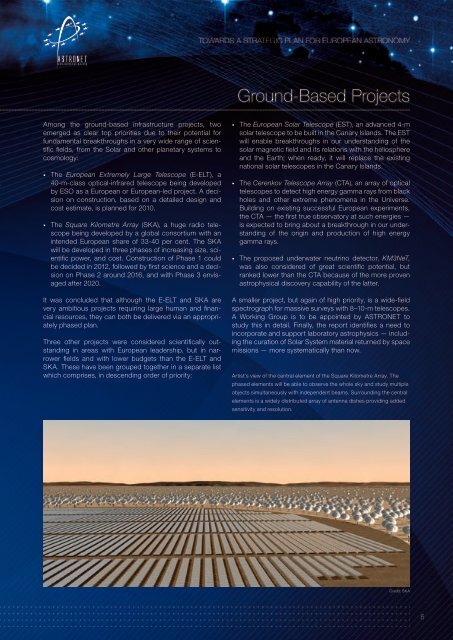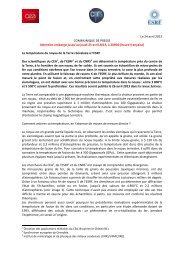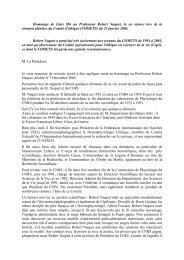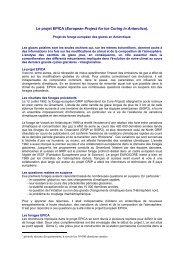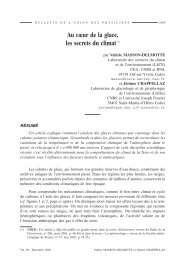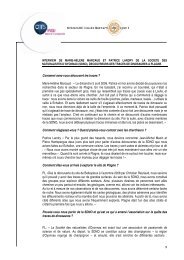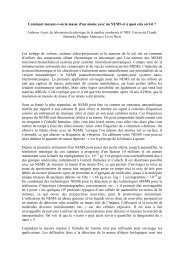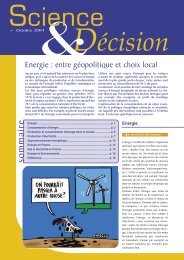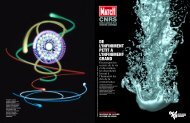The ASTRONET Roadmap: Strategic Planning for European ... - CNRS
The ASTRONET Roadmap: Strategic Planning for European ... - CNRS
The ASTRONET Roadmap: Strategic Planning for European ... - CNRS
- No tags were found...
Create successful ePaper yourself
Turn your PDF publications into a flip-book with our unique Google optimized e-Paper software.
TOWARDS A STRATEGIC PLAN FOR EUROPEAN ASTRONOMYGround-Based ProjectsAmong the ground-based infrastructure projects, twoemerged as clear top priorities due to their potential <strong>for</strong>fundamental breakthroughs in a very wide range of scientificfields, from the Solar and other planetary systems tocosmology:• T h e <strong>European</strong> Extremely Large Telescope (E-ELT), a40-m-class optical-infrared telescope being developedby ESO as a <strong>European</strong> or <strong>European</strong>-led project. A decisionon construction, based on a detailed design andcost estimate, is planned <strong>for</strong> 2010.• T h e Square Kilometre Array (SKA), a huge radio telescopebeing developed by a global consortium with anintended <strong>European</strong> share of 33-40 per cent. <strong>The</strong> SKAwill be developed in three phases of increasing size, scientificpower, and cost. Construction of Phase 1 couldbe decided in 2012, followed by first science and a decisionon Phase 2 around 2016, and with Phase 3 envisagedafter 2020.It was concluded that although the E-ELT and SKA arevery ambitious projects requiring large human and financialresources, they can both be delivered via an appropriatelyphased plan.Three other projects were considered scientifically outstandingin areas with <strong>European</strong> leadership, but in narrowerfields and with lower budgets than the E-ELT andSKA. <strong>The</strong>se have been grouped together in a separate listwhich comprises, in descending order of priority:• <strong>The</strong> <strong>European</strong> Solar Telescope (EST), an advanced 4-msolar telescope to be built in the Canary Islands. <strong>The</strong> ESTwill enable breakthroughs in our understanding of thesolar magnetic field and its relations with the heliosphereand the Earth; when ready, it will replace the existingnational solar telescopes in the Canary Islands.• T h e Cerenkov Telescope Array (CTA), an array of opticaltelescopes to detect high energy gamma rays from blackholes and other extreme phenomena in the Universe.Building on existing successful <strong>European</strong> experiments,the CTA — the first true observatory at such energies —is expected to bring about a breakthrough in our understandingof the origin and production of high energygamma rays.• <strong>The</strong> proposed underwater neutrino detector, KM3NeT,was also considered of great scientific potential, butranked lower than the CTA because of the more provenastrophysical discovery capability of the latter.A smaller project, but again of high priority, is a wide-fieldspectrograph <strong>for</strong> massive surveys with 8–10-m telescopes.A Working Group is to be appointed by <strong>ASTRONET</strong> tostudy this in detail. Finally, the report identifies a need toincorporate and support laboratory astrophysics — includingthe curation of Solar System material returned by spacemissions — more systematically than now.Artist’s view of the central element of the Square Kilometre Array. <strong>The</strong>phased elements will be able to observe the whole sky and study multipleobjects simultaneously with independent beams. Surrounding the centralelements is a widely distributed array of antenna dishes providing addedsensitivity and resolution.Credit: SKA5


